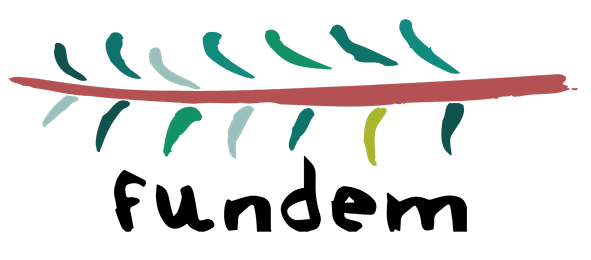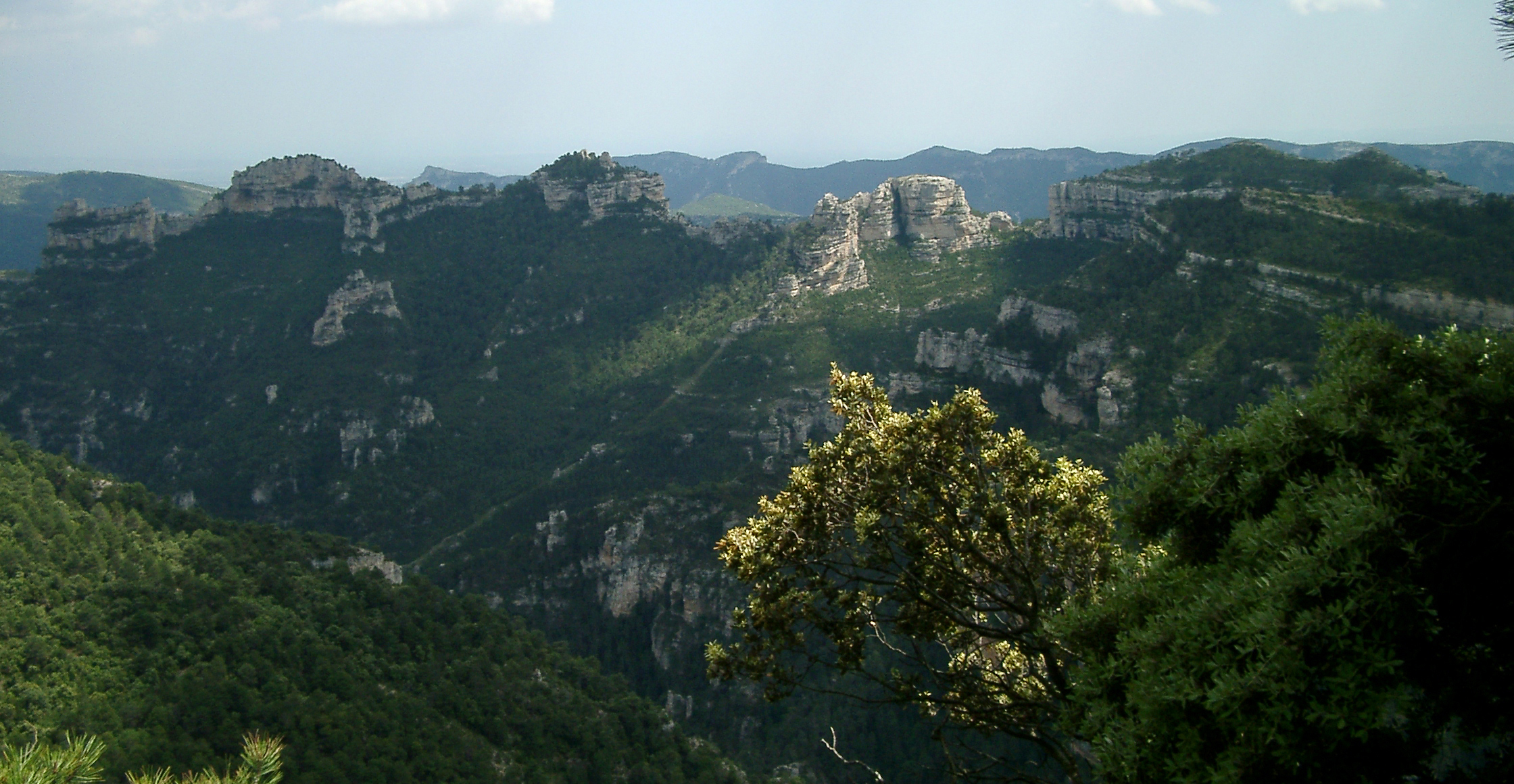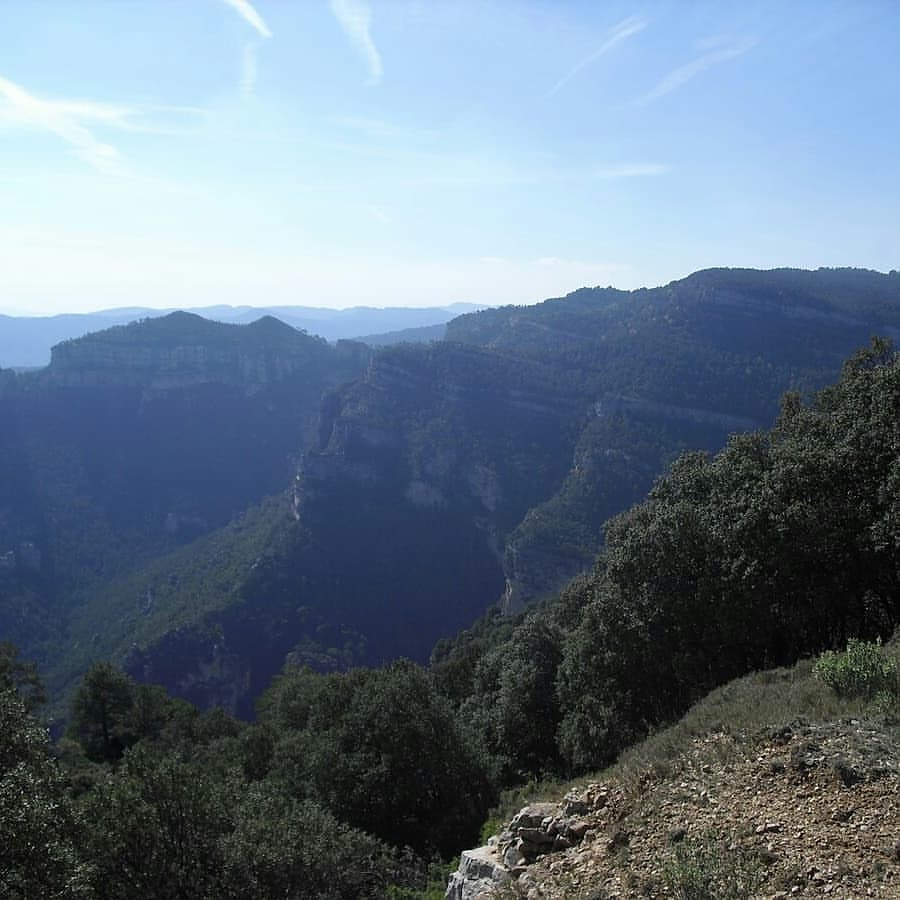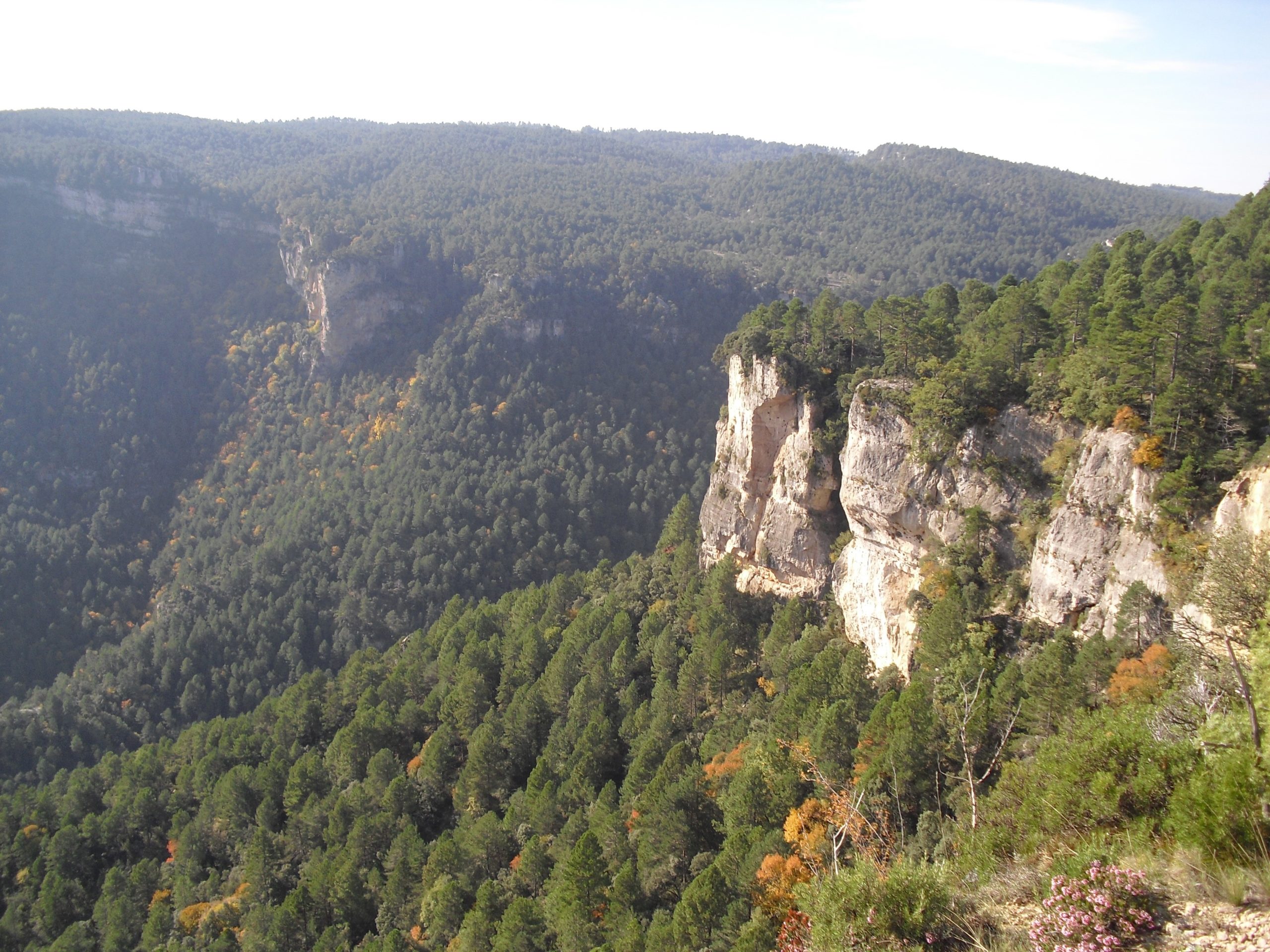The first and most emblematic project taken over by Fundem is the Mas del Peraire Biological Reserve.
It is a propierty of more than 240 hectares located in Fredes – Pobla de Benifassà – in the north of the province of Castellón (Spain), whose importance as a natural space to be preserved was the reason for the Foundation to acquire it in 1997.
Actions
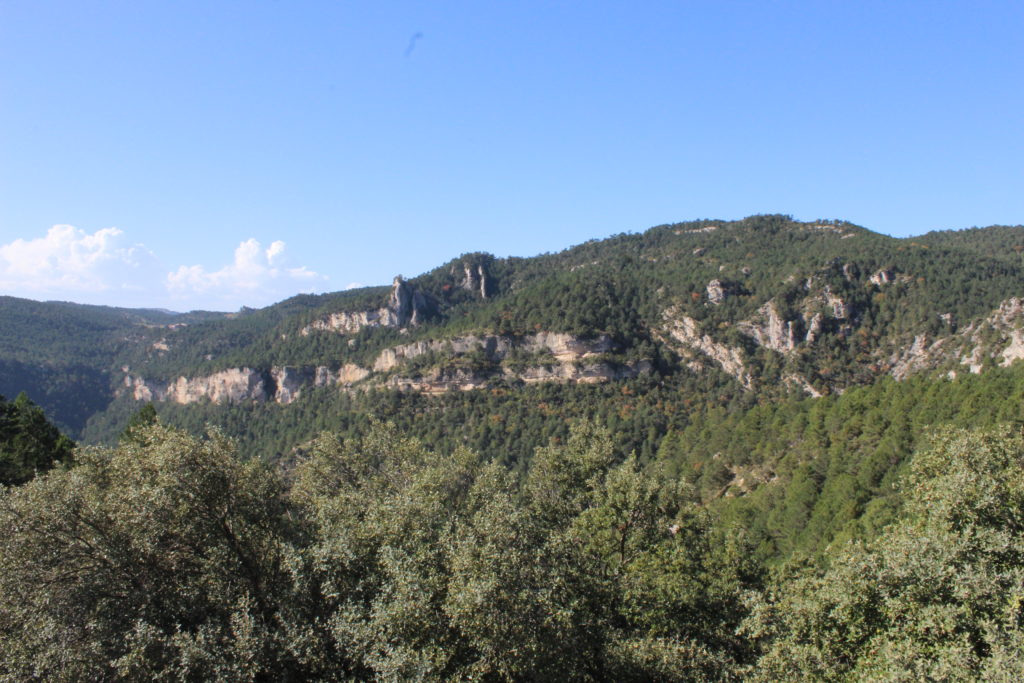
Fundem took over the management of the Más del Peraire estate in 1997, and so far it has been managed prioritizing the evolution of nature itself over the execution of specific tasks.
The most significant actions carried out are: The official request for the farm to become a game reserve. The final statement was published in DOGV No. 3,345 dated October 6, 1998, resolution of August 14, 1998 of the General Directorate for Sustainable Development, Department of the Environment. It was signaled and the name of the farm became Más del Peraire Biological Station, hunting inside is totally forbidden.
With adequate signage and the placement of barriers at road entrances, motorized traffic is restricted to what is strictly necessary: surveillance of the area and work to be done. The passage of people through the biological station is free, as long as it is done on foot and the basic rules of respect for nature are adopted.
A good part of the land used to be an agricultural holding, for which numerous stone walls were built to contain terraces, some of them of great size and careful construction. After the abandonment of agricultural use, several decades ago, natural vegetation has gradually colonized these terraces.
Restoration work has been carried out using traditional dry masonry techniques, repairing some of the most damaged walls. The main objective of these actions is to keep the fertile soil in place and stop erosion, allowing time for the native forests to permanently colonize the terraces.
Old existing works on the land have been restored, all of them dry stone construction. There are some wells,small but providing water to people and livestock; its stone vaults had collapsed plugging the holes and making access to the water impossible. In the same place there was another small construction: an old juniper resin oven.
A small part of the old farmhouse has been rebuilt to use it as a shelter for surveillance and research center. The principles of the project are to scrupulously maintain the traditional aesthetics, but making it compatible with the functionality and comfort necessary to meet its objectives. Building materials and energy and water systems are based on ecological criteria.
All the works carried out in the biological station cause the minimum impact on nature and the preservation of the traditional landscape.
Inside the property, three micro-reserves of flora have been declared attached to the LIFE Project for the Conservation of Flora of the Valencian Community. Currently, the declaration of a wildlife reserve has been requested: request made on October 28, 2004.
The Mas del Peraire Biological Station has been used by different experts to develop different research projects. Here are some of them: Preparation of a doctoral thesis on the vegetation of the region, carried out by Mr. Arnoldo Valsangiacomo, through the Botanical Garden of the University of Valencia.
Research on Arctostaphyllos uva-ursi, studies on the reproduction of the species and the possibilities of its use to prevent erosion processes, carried out by Dr. Patricio García Fayos.
Various studies and follow-ups on the reintroduction of endangered flora species, developed by Technicians from the Department of Territories and Habitatge (Valencian Goverment).
Study on the management of the reserve, carried out by Mr. Juan Bautista Miguel Gil.
Monitoring of the necrophage falconiform birds and work for the reintroduction of the bearded vulture (Gypaetus barbatus), carried out by Juan Bautista Miguel Gil and Enrique Errando Mariscal
DESCRIPTION
The area presents a pronounced variation in altitude, from 1,300 meters above sea level at the summits to 700 meters in the deepest ravines. The distribution of the vegetation responds to these differences, with a clear dominance of Scots pine (Pinus sylvestris) and Carrascas (Quercus ilex) in the lower areas.
Despite the excellent state of conservation of the vegetation, most of it is recovering from the use to which it was subjected by its former owners. In the case of pines, there was an abusive logging in the mid-1970s; Holm oaks were cut down for charcoal in the 1950s.
FLORA
Splashing the masses of Scots pine and holm oaks, other trees emerge such as: black pine (Pinus nigra), oak (Quercus valentina), holly (Ilex aquifolium), maple (Acer …) … The understory is dominated by: juniper (Juniperus communis) , bearberry (Arctostaphylos uva-ursi), guillomo (Amelanchier ovalis), boxwood (Buxus sempervirens), ivy (Hedera helix), white rockrose (Cistus albidus), heather (Erica multiflora) …
Some plants are especially significant because they are endangered species, endemic species with a reduced distribution, or elements that are at the limit of their geographical distribution. Some examples are:
Salix tarraconensis, Sorbus aria, Taxus baccata, Antirrhinum pertegasii, Pinguicula grandiflora dertosensis, Paeonia officinalis, Thymus willkommii
FAUNA
The fauna is typical of the Mediterranean mountain, but, exceptionally, well represented due to the location of the farm in the heart of one of the regions with the lowest human population density on the Iberian Peninsula. This fact, together with the difficulty of access to some corners and the diversity of habitats caused by the variation in altitude, has allowed some animal species to find here one of the last places to survive.
Regarding amphibians and reptiles, the general information available is so scarce that this reserve area is of utmost importance to carry out studies on these zoological groups, and subsequently propose management plans or reintroduction of some species that are disappearing in the region. As an example, we could mention the gallipato (Pleurodeles waltl), the salamander (Salamandra salamandra) or the Mediterranean tortoise (Testudo hermanni).
The birds represent an exceptionally complete sample of the Valencian mountain ornith-fauna, especially the group of raptors, among which we find: griffon vulture (Gyps fulvus), hawk (Accipiter nisus), goshawk (Accipiter gentilis), royal eagle ( Aquila chrysaetos), Common Hawk (Falco peregrinus), Eagle Owl (Bubo bubo), Tawny Owl (Strix aluco), etc.
Some birds deserve special mention because they are more typical of Central Europe, are rare in these latitudes, but that we can find here as wintering or even some as nesting, due to the characteristics of the ecosystem. This is the case of the red rocker (Monticola saxatilis), nuthatch (Sitta europaea), lugano (Carduelis spinus), greenfinch (Serinus citrinella), crossbill (Loxia curvirostra), common kings (Regulus regulus), lesser beak (Dendrocopus minor) …
The situation close to the coast but separated from the large human population, favor the importance of the area as a passage and rest area for many species of migratory birds.
Among the mammals that live in the area, it is remarkable the presence of the mountain goat (Capra pyrenaica). The last goats took refuge in these mountains a few decades ago, a few dozen have recovered their populations after the application of protection policies, currently expanding their area of distribution to much of the north of the province of Castellón. In addition to the Mountain Goat, the Wild Boar (Sus scrofa) is significant, reaching high densities
The presence of a rich community of carnivorous mammals should be highlighted. The presence of the wildcat (Felis sylvestris) is of special importance, a species classified as vulnerable in the red list of vertebrates in Spain. The badger (Meles meles) and marten (Martes foina) populations also stand out for their good state of conservation.
Two mammals deserve special mention for their recent disappearance and for the hopes of their possible recovery:
- The roe deer (Capreolus capreolus) was present until about a century ago, when the last capture date of a specimen in the area dates back to. The fact that in the summer of 1998 a roe deer was accidentally run over in a nearby town, suggests a possible spontaneous recovery.
- The Iberian lynx (Lynx pardinus) is considered one of the most endangered carnivores in the world. It probably lived in the area until the 1950s. The possibility of recovery in our geographical area would be vital for the perpetuation of the species.
From 2017 until today, we have been collaborating with the Regional Ministry of Agriculture in the project to reintroduce the bearded vulture within the lands of FUNDEM in the Tinença of Benifassà.
